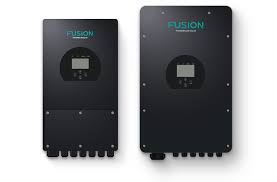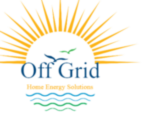Introduction
Solar power inverters are a crucial component of any solar energy system. But what are they, and how do they work?
In simple terms, a solar power inverter takes the direct current (DC) output of a solar panel and converts it into alternating current (AC) that can be used to power typical household appliances and devices. This process is known as “inverting” the power.

There are a number of different types of solar inverters on the market, each with its own set of unique features. Some work better with smaller systems, while others are better suited for larger ones. It’s important to choose the right type of inverter to ensure your system is effective and efficient.
In this post, we’ll discuss the different types of solar power inverters and how they work.
What Is a Solar Power Inverter?
You likely have a solar power inverter in your home. Inverters are common components of solar electric systems. Solar inverters convert direct current (DC) electricity from solar panels into Alternating Current (AC) electricity which is what powers your home.
What Are the Different Types of Solar Power Inverters?
Solar inverters are an important part of a solar power system. They convert the DC power that’s produced by the solar panels into AC power, which can then be used to power appliances and other devices.
There are three main types of solar inverters: string inverters, microinverters, and power optimizers. String inverters are the most common type; they’re installed on the roof and connect to all of the solar panels at once. Microinverters are installed underneath each solar panel; they’re more expensive but can handle more load than a string inverter. Power optimizers are installed between the solar panel and the inverter; they’re less common than microinverters but can be more efficient.
No matter what type of solar inverter you choose, it’s important to make sure that it’s compatible with your system. Talk to your installer to make sure you get the right one for your home.
How Does a Solar Power Inverter Work?
When you’re installing a solar power system, the inverters are one of the most important components. They take the direct current (DC) output from the solar panels and turn it into alternating current (AC) that can be used by appliances in the home.
You might be wondering where the inverters are located. They’re actually on the back of each solar panel, and they work with a string inverter to convert DC to AC. This is a really important function, because it means that you can use standard appliances in your home even if you’re using solar power.
Plus, inverters are typical components of solar electric systems because solar panels generate DC electricity and most devices used in homes or offices operate on AC. So it’s a win-win situation all around!
What Will a Solar Power Inverter Power Up?
You might be wondering, what will a solar power inverter power up? The answer is, just about anything.
An inverter is a device that converts direct current (DC) electricity into alternating current (AC). So if you have a solar energy system with an inverter, you can use that AC electricity to power up anything in your home or business.
Solar inverters come in two types: grid-tie and off-grid. A grid-tie inverter connects to the local utility grid, while an off-grid inverter runs independently from the grid.
Both types of inverters have their advantages and disadvantages, so it’s important to choose the right one for your needs. But overall, solar inverters are a crucial part of any solar energy system, and they’re getting more and more popular every day.
What Are the Benefits of Solar Power Inverters?
Solar power inverters are an important component of any solar energy system. They take the direct current (DC) electricity that’s produced by the solar panels and convert it into the alternating current (AC) that’s used in most homes and businesses.
Not all inverters are created equal, though. You want to make sure you’re using a high quality solar power inverter, because it will be more efficient at converting the electricity and you’ll lose less energy in the process.
So why is this important? Well, a high quality solar power inverter can save you money in the long run. It’ll help you produce more electricity from your solar panels, which means you’ll need fewer panels to meet your needs.
Are There Any Drawbacks to Solar Power Inverters?
There’s no doubt that solar power inverters have come a long way in recent years. But with all the new options and technologies on the market, it can be tough to figure out which one is right for your home.
So how do modern solar power inverters work, and what will they power up? Let’s take a closer look.
Are There Any Drawbacks to Solar Power Inverters?
While solar power inverters offer a number of benefits, there are a few drawbacks you should be aware of. For example, most solar inverters require a battery backup to store energy for later use. And if you live in an area with lots of sunlight, you may need a bigger inverter to handle the load.
Conclusion
Solar power inverters are becoming a more and more popular way to go off grid. They’re efficient, durable, and can be used to power a variety of things.
So how exactly do solar power inverters work? We’ll walk you through it. The first step is to convert the solar energy into Direct Current (DC) electricity. This DC electricity is then stored in the battery bank. From there, the inverter will monitor the battery bank and provide power as needed – whether that’s to your home, office, or other devices.
Solar power inverters are a great way to go off grid, and they’re becoming more and more popular each day. If you’re interested in learning more about them, or in purchasing your own, contact us today.
